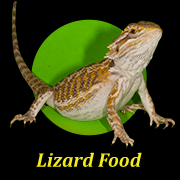ARC Frog Programs
ARC Frog Programs
Frogs are the reason we exist – we love frogs! Why? Well we love all nature but frogs were, and still are in serious trouble and it was something we could do. Even I (Gerry) can’t tell you how many frog species have vanished in the last few decades, but it’s a big number: around 300! How many are threatened? Well most will agree around one third of all amphibians are now threatened globally – but how many is that? Today (28/12/15) there are 7494 amphibian species listed in the world, a number that goes up every few days. In fact it has gone up over 11% in the last five years. But let me make a bold statement – “There are over 25,000 amphibian species on Earthâ€. And what does that mean? It means, considering 1/3 of those are threatened, there are more amphibians threatened with extinction than we even currently have names for!
When the concept of the Amphibian Research Centre was formed we planned to find new ways of funding conservation. To this end the ARCade (or should that be ARC-aid?) was formed. The ARCade not only supplies the ARC with quality FREE insects – better known as frog food – but all the profits made from selling insects and rodents to you are used to pay for staff and other expenses that are required by our frog programs.
This model has allowed the ARC to become a global leader in frog conservation. From our beginnings researching how to breed and grow analogue species (those closely related to threatened frogs) to our world first breeding, rearing and release to the wild of many threatened species, we continue to find new ways to save frogs. We don’t just breed and put frogs back; we actively study what threatens them and look for ways to reverse those threats.
Our research led to us having a very significant involvement in the discovery and early research on the global frog killing Chytrid Fungus. We have also had a leading role in developing technologies to keep infections out of captive breeding programs as well as treatment for infected frogs. Our “frog pods†shipping container based potable frog conservation labs are now used all over the world by zoos, universities, governments and non-profits trying to save frogs. We are now looking for ways to assist frogs to live in environments with the Chytrid Fungus or to reduce their exposure to it.
last-spotted-tree-frogs-from-buffale-creek

Extinct in the wild but holding on at the ARC some of the last Spotted Tree Frogs from Buffalo Creek breed for the first time in captivity.
shipping-container-frog-pod

Artificial rivers safely locked inside a shipping container “frog pod†provide breeding habitat for the Spotted Tree Frog program
last-spotted-tree-frogs-from-buffale-creek

Hot rock: babies naturally bask on rocks up to 40°C to accelerate their growth.
shipping-container-frog-pod

Spotted Tree Going Home: We give frogs their numbers and collect size and weight data prior to release.
shipping-container-frog-pod

Sizing up: data like frog size helps us see who does well and then develop techniques to make future releases more successful.
We breed and study Australia’s most threatened frogs, but we advise globally and have active links and sharing of information and technology with dozens of projects across the globe. Our work has allowed ourselves and others to rescue disappearing frogs safely to captivity before their populations have become extinct in the wild. There are frogs that would now be extinct if we had not been around. We have also reversed extinction; releasing captive frogs into places where their species had become extinct. Now the ongoing release and monitoring work of ARC and our partners is keeping them there.
last-spotted-tree-frogs-from-buffale-creek

Two year old Ranita helps count hundreds of Spotted Tree Frogs ready to release
shipping-container-frog-pod

Dave reverses extinction: the first Spotted Tree Frogs go back to Bogong Creek in NSW ending a decade of extinction in that state.
erika-checks-for-eggs

Baby steps: it will be a long road from here until we can be sure Spotted Tree Frogs can survive on their own.
Your choice to shop with the ARCade supports frog conservation globally. We know that if you have a native pet that needs the foods sold by us (or even any pets) that you also care about the planet, its habitats and the species that live there. You have a choice: support us with your purchase or support another seller who will use the profits for a house, car, yacht…. We know you would prefer to support conservation rather than consumption. Do you really have any reason left to get your feeder insects or rodents elsewhere?
There are many projects that the ARC is involved in, some are the subject of other pages at frogs.org.au, here is a brief tour of a few you may find interesting.
erika-checks-for-eggs

Checking for eggs in a Corroboree Frog breeding room.
erika-checks-for-eggs

Compact-Us: Corroboree Frog breeding tanks are racked up on wheels to save space.
erika-checks-for-eggs

FOUND: the first captive bred Corroboree Frog eggs.
erika-checks-for-eggs

Releasing eggs to special enclosures designed to reduce tadpole contact with Chytrid Fungus.
erika-checks-for-eggs

Dave photographs frog bellies, we will use these unique “finger print†markings to track each frogs survival.
erika-checks-for-eggs

Helping hand: The first wild release of adult Corroboree Frogs. Not everything is a success as most of the frogs succumbed to Chytrid in the wild.
erika-checks-for-eggs

Trying again: More adult frogs to take back…
chytrid-free-enclosure

This time they are destined for a Chytrid “Free†enclosure high up on the Kosciuszko plateau.
erika-checks-for-eggs

Extending our reach: An ARC built “frog pod†at Currumbin Wildlife Sanctuary QLD. Others are at Taronga Zoo NSW, Tidbinbilla Nature Reserve ACT, Macadamia Castle NSW and a number of overseas zoos.
erika-checks-for-eggs

Gerry releases frogs to the enclosure.
erika-checks-for-eggs

Lock the gate: Dave secures the enclosure with a symbolic padlock (Chytrid fungi are not known for their lock picking skills).
erika-checks-for-eggs

Life support: Frog pods have all the bells and whistles; from water treatment to controlled temperatures, rainfall and light cycles.
erika-checks-for-eggs

Ready to set sail: A frog pod is strapped and wrapped ready to board a ship bound for England.
erika-checks-for-eggs

Critically Endangered Tinker Frogs are assisted inside Currumbin’s ARC built frog pod.
erika-checks-for-eggs

Beyond borders: Alejandro takes a look at a Giant Japanese Salamander while Gerry discusses chytrid and the breeding program with local scientists and zoo staff.
chytrid-free-enclosure

Generation Next: Gerry’s kids Alejandro and Ranita take a lunch break during a Baw Baw Frog rescue.









